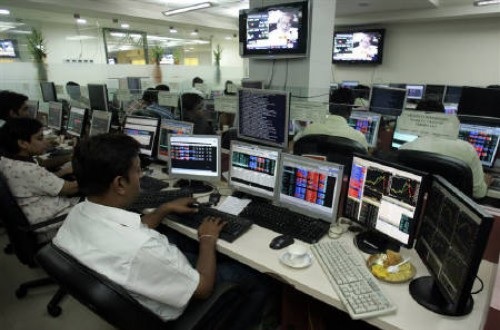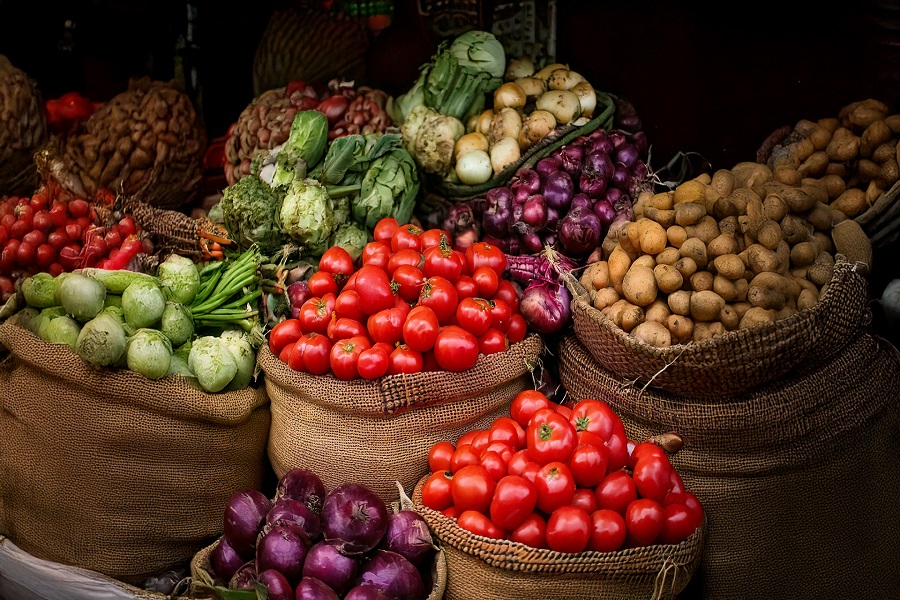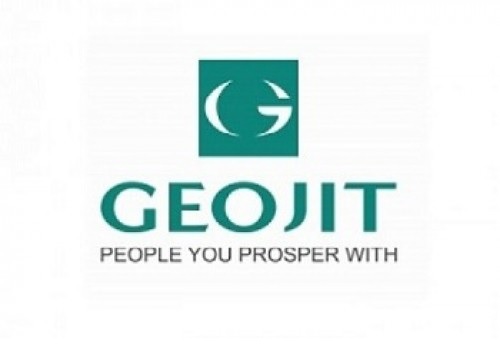Copper trading range for the day is 874.9-885.3 - Kedia Advisory

Gold
Gold prices eased by 0.28% to Rs.96,902 as investors remained cautious ahead of further developments in the ongoing US-China trade negotiations. Talks in London were described as “good” and “fruitful” by key U.S. officials, boosting optimism but not enough to lift gold amid easing inflation concerns reported by the New York Fed. Meanwhile, global central bank demand continues to support the long-term bullish outlook. China’s central bank added gold to its reserves for the seventh consecutive month in May, bringing its total to 73.83 million troy ounces, reinforcing its strategy to diversify from dollar assets. However, physical demand remained weak, especially in India, where gold discounts widened to $56 per ounce, the highest in over a month, due to near-record domestic prices. Other Asian hubs showed mixed demand trends, with premiums in China ($10–$14), Hong Kong ($0.30–$1.30), and Singapore (up to $2.50), while Japan saw minimal movement around spot prices. Despite high prices, global gold demand rose 1% YoY in Q1 2025 to 1,206 metric tons, supported by a 170% surge in investment flows and a 14% rise in bar demand. Chinese bar and coin investment jumped 12%, the highest since Q2 2013, even as global jewellery demand dropped 21%. Gold is witnessing long liquidation with a marginal 0.05% drop in open interest, suggesting weaker bullish momentum. Immediate support is at Rs.96,295, and a break below could push prices toward Rs.95,680. On the upside, resistance lies at Rs.97,505, and a move above this level could lead to testing Rs.98,100.
Trading Ideas:
* Gold trading range for the day is 95680-98100.
* Gold dropped as investors awaited further developments in the ongoing US-China trade discussions.
* Treasury Secretary Scott Bessent described Monday’s talks as a “good meeting”
* China's central bank added gold to its reserves in May for the seventh straight month.
Silver
Silver prices declined by 0.32% to Rs.1,06,749, easing from a 13-year high hit earlier this week as improving US-China trade relations weakened safe-haven demand. High-level discussions in London, focused on rare earth exports, signaled diplomatic progress, with President Donald Trump expressing optimism despite acknowledging ongoing challenges. This reduced geopolitical risk appetite, prompting a slight pullback in silver after its recent rally. Despite short-term weakness, silver remains fundamentally strong, driven by robust industrial demand, especially from the solar and green technology sectors. The Silver Institute reports that global silver supply fell 15% short of demand in 2024, with a continued deficit expected in 2025 for the fifth consecutive year. Industrial fabrication is forecast to grow by 3%, surpassing 700 million ounces for the first time, underscoring silver's critical role in the green economy. Overall demand is projected at 1.20 billion ounces, with retail investment rising by 3%, particularly in Europe and North America. Silver coin and bar demand is forecast to rise by 7% in 2025, rebounding from a sharp 22% drop last year, which was driven by profit-taking and market saturation in the U.S. The global silver deficit is expected to narrow by 21% to 117.6 million ounces due to slightly higher supply and marginally reduced demand. Silver is undergoing long liquidation, with open interest falling by 6.06% to 21,205. Support lies at Rs.1,06,110, with further downside risk toward Rs.1,05,475. Resistance is seen at Rs.1,07,375, and a break above could push prices to Rs.1,08,005.
Trading Ideas:
* Silver trading range for the day is 105475-108005.
* Silver prices retreated as easing trade tensions between the US and China dampened safe-haven demand.
* Strong industrial demand, especially from solar energy, supported silver prices.
* Silver Institute projects another supply deficit in 2025, boosting bullish sentiment.
Crude oil
Crude oil prices edged up by 0.32% to Rs.5,583, supported by positive developments in US-China trade negotiations and reduced Saudi crude allocations to China. Talks between the two global giants resumed in London for a second day, aiming to de-escalate tensions that have spread from tariffs to rare earth minerals. President Donald Trump expressed optimism, stating he received “only good reports,” which lifted market sentiment and hopes for a stronger global economic outlook—critical for oil demand recovery. On the supply front, Saudi Aramco is set to ship about 47 million barrels of oil to China in July, 1 million barrels less than in June. Meanwhile, OPEC+ continues to gradually unwind its production cuts, planning a 411,000 bpd output increase for July. However, a Reuters survey indicated that OPEC’s actual production rise in May was limited, with key producers like Iraq and Saudi Arabia falling short of their agreed increases. U.S. inventory data provided further bullish support. Crude stocks fell sharply by 4.304 million barrels, the largest drop since November 2024, far exceeding expectations. However, gasoline inventories surged by 5.219 million barrels, and distillates rose slightly, suggesting uneven demand in refined products. Crude oil is witnessing short covering as open interest declined by 2.89% to 8,289. Immediate support lies at Rs.5,550, with further downside risk toward Rs.5,517. Resistance is at Rs.5,642, and a breakout could push prices toward Rs.5,701.
Trading Ideas:
* Crudeoil trading range for the day is 5517-5701.
* Crude oil gains buoyed by U.S.-China trade talks and a dip in Saudi Arabian crude supply to China.
* Saudi crude supply to China set to drop by 1 million barrels in July.
* OPEC+ plans July output hike of 411,000 bpd amid gradual supply recovery.
Natural gas
Natural gas prices declined sharply by 2.96% to Rs.302, pressured by reduced LNG feedgas flows amid ongoing spring maintenance at several major U.S. export facilities. Average LNG feedgas demand has slipped to 13.8 billion cubic feet per day (bcfd) so far in June, down from 15.0 bcfd in May and a record 16.0 bcfd in April. Key plants including Cameron LNG, Sabine Pass, Corpus Christi, and Freeport LNG are undergoing maintenance, which is expected to continue into mid-to-late June, dampening short-term demand for natural gas. Despite the export slowdown, weather forecasts across the Lower 48 states remain warmer than normal through June 24, which could increase cooling-related demand. Meanwhile, production has remained steady at around 105.2 bcfd, slightly below the March record of 106.3 bcfd, as seasonal maintenance continues. U.S. storage levels remain comfortable, currently about 5% above the five-year average. For the week ending May 30, utilities injected 122 billion cubic feet into storage—higher than expectations of 111 bcf—marking the seventh consecutive triple-digit build. Looking ahead, the EIA forecasts record-high natural gas production and consumption in 2025. Dry gas output is projected to rise to 104.9 bcfd in 2025 and 106.4 bcfd in 2026, while domestic demand is seen peaking at 91.3 bcfd in 2025 before slightly easing. Natural gas is under fresh selling pressure as open interest surged 39.26% to 16,069. Immediate support lies at Rs.297.8, with further downside potential toward Rs.293.6. Resistance is at Rs.309.8, and a breakout could lift prices toward Rs.317.6.
Trading Ideas:
* Naturalgas trading range for the day is 293.6-317.6.
* Natural gas prices fell as LNG export plant maintenance cut feedgas demand.
* LNG feedgas demand dropped to 13.8 bcfd in June from 15.0 bcfd in May.
* Key facilities like Sabine Pass and Freeport LNG faced outages due to maintenance.
Copper
Copper prices declined by 0.41% to Rs.878.95, pressured by weak industrial demand from China, the world’s top consumer. Recent Chinese economic data revealed persistent deflationary pressures and softer-than-expected export growth, both of which were exacerbated by ongoing US-China trade tensions. Notably, China's imports of unwrought copper and copper products fell 2.5% month-on-month and 16.9% year-on-year to 427,000 tonnes in May, signaling a slowdown in demand. Despite the bearish macro indicators, copper prices remained supported by global supply concerns. Operational disruptions at Teck Resources in Chile and the Kamoa-Kakula project in the Democratic Republic of Congo have raised fears of tightening supply in the coming months. The bullish narrative was also reinforced by dwindling inventories at London Metal Exchange (LME) warehouses, which have fallen to 138,000 tons—down nearly 50% year-to-date—signaling strong underlying demand. Adding to the uncertainty, U.S. President Donald Trump signed an executive order doubling tariffs on steel and aluminum, stoking fears that copper could soon face similar restrictions. Meanwhile, the global refined copper market posted a surplus of 17,000 metric tons in March, sharply down from 180,000 tons in February, suggesting improving market balance. The market is under long liquidation as open interest dropped by 2.03% to 6,558. Immediate support lies at Rs.877, with a break below possibly testing Rs.874.9. Resistance is seen at Rs.882.2, and a move above this could lead to a retest of Rs.885.3.
Trading Ideas:
* Copper trading range for the day is 874.9-885.3.
* Copper prices fell on weak Chinese industrial demand and declining import volumes.
* Downside limited by supply disruptions in South America and Africa.
* LME copper stocks fell to 138,000 tons—lowest in nearly a year.
Zinc
Zinc prices edged lower by 0.02% to Rs.252.35, as persistent global trade tensions and weakened industrial demand—particularly from China—kept market sentiment under pressure. The slowdown in Chinese manufacturing activity, with the PMI contracting for the second consecutive month, has reinforced concerns over reduced zinc consumption. This has led to increased caution among traders, with speculators paring back positions after recent price gains, amid uncertainty around international trade negotiations and the imposition of fresh U.S. tariffs on select metals. Despite signs of tighter supply—especially in China due to widespread smelter maintenance—the broader weakness in demand has overshadowed any bullish sentiment. China's refined zinc production in May fell 1% month-on-month but grew modestly by 2% year-on-year. However, cumulative production from January to May rose only slightly by over 0.5% YoY, falling short of market expectations. On the global front, the zinc market surplus narrowed to 23,700 metric tons in March, down from 75,900 tons in February, according to the International Lead and Zinc Study Group (ILZSG). Yet, the first-quarter surplus remained at 143,000 tons, reflecting ongoing supply-demand imbalances. The market is under long liquidation as open interest declined by 7.46% to 2,779. Support lies at Rs.251, with a break below potentially testing Rs.249.7. Resistance is seen at Rs.253.3, and a move above that may lead to a retest of Rs.254.3.
Trading Ideas:
* Zinc trading range for the day is 249.7-254.3.
* Zinc prices fell due to global trade tensions and weak industrial demand.
* China’s slowing manufacturing activity continues to dampen market sentiment.
* Stimulus hopes rise as China’s PMI contracts for the second straight month.
Aluminium
Aluminium prices edged up by 0.38% to settle at Rs.240.65 as markets responded positively to progress in US-China trade negotiations. Investor sentiment improved after President Donald Trump confirmed high-level meetings between U.S. Treasury Secretary Scott Bessent and Chinese Vice Premier He Lifeng in London. The optimism follows a productive phone conversation between Trump and President Xi Jinping, potentially setting the stage for easing tensions between the world’s two largest economies—both critical players in the global aluminium trade. However, the broader outlook remains cautious due to persistent concerns over China’s economic health. Despite the diplomatic developments, China's May trade data revealed weaker-than-expected export growth, largely driven by a slump in shipments to the U.S., and deeper-than-forecast import contractions, signaling subdued domestic demand. Further compounding the weak macro backdrop, China continues to grapple with disinflationary pressures, with consumer prices falling for the fourth straight month and producer prices plunging to a near two-year low. On the supply side, China’s aluminium production increased by 4.2% year-on-year in April to 3.75 million metric tons. Cumulative output for the first four months reached 14.79 million tons, up 3.4% year-on-year. The market witnessed short covering, as indicated by a 0.59% drop in open interest to 4,069 contracts. Support is placed at Rs.239.1, with further downside potential to Rs.237.4. Resistance is now seen at Rs.241.7, and a break above could lead to a test of Rs.242.6.
Trading Ideas:
* Aluminium trading range for the day is 237.4-242.6.
* Aluminium prices rose as US-China trade talks resumed, boosting investor confidence.
* Trump confirmed trade talks in London led by US and Chinese top officials.
* China's May aluminium exports rose 5.6% monthly but fell 3.2% year-on-year.
Cottoncandy
Cottoncandy prices edged higher by 0.19% to close at Rs.53,150, driven by short covering after recent declines triggered by a marginal upward revision in India’s cotton production estimates. The Cotton Association of India (CAI) raised the 2024–25 production estimate slightly to 291.35 lakh bales (of 170 kg each), up from 291.30 lakh bales, with Odisha contributing to the higher output. However, this modest increase contrasts with declining consumption and exports, painting a mixed demand-supply picture. CAI's latest April report revised cotton consumption downward by 8 lakh bales to 307 lakh bales and trimmed export projections by 1 lakh bale to 15 lakh bales, significantly lower than the previous season’s 28.36 lakh bales. Meanwhile, cotton imports have surged, with 27.5 lakh bales imported by April, compared to just 15.2 lakh bales in the previous season. Consequently, ending stocks are expected to rise to 32.54 lakh bales by September 2025, higher than the 30.19 lakh bales recorded in the 2023–24 season. Globally, the U.S. cotton balance sheet for 2024/25 also reflected a bearish tilt, with a 100,000-bale reduction in exports and an equivalent rise in ending stocks. World production is slightly down due to reductions in Argentina and Cote d’Ivoire, partially offset by gains in China. Technically, the market is under short covering as open interest dropped by 1.39% to 71 contracts. Support lies at Rs.53,100, with further downside to Rs.53,050. Resistance is seen at Rs.53,200, and a breakout could push prices toward Rs.53,250.
Trading Ideas:
* Cottoncandy trading range for the day is 53050-53250.
* Cotton gained on short covering after prices dropped amid slight upward revision in India’s output estimate.
* CAI cut consumption forecast by 8 lakh bales to 307 lakh for the 2024–25 season.
* Cotton exports expected to fall to 15 lakh bales, down 13.36 lakh from last year.
* In Rajkot, a major spot market, the price ended at 25874.55 Rupees dropped by -0.44 percent.
Turmeric
Turmeric prices fell sharply by 2.04% to Rs.14,758, pressured by a significant surge in arrivals and subdued export enquiries. Daily arrivals doubled to around 57,500 quintals from 29,860 quintals in the previous session, intensifying downward pressure. Despite the dip, the downside remains somewhat limited due to persistent concerns over lower production and quality-related issues. While the turmeric cultivation area rose by 10% to 3.30 lakh hectares this season, productivity has not followed suit. Quality concerns have led to a price premium for fresh arrivals in markets like Duggirala, where new stock is receiving higher bids than older produce. Buyers are favoring superior quality turmeric, and robust trade activity continues with daily volumes ranging between 1,000 and 1,200 bags. With nearly 50–55% of the crop already traded, ongoing harvesting through June is expected to maintain strong market momentum. On the export front, turmeric exports for April–March 2025 rose 8.83% YoY to 1.76 lakh tonnes. March exports were up 20.39% from February, although they fell 13.41% YoY. Himachal Pradesh’s government-backed procurement initiative is likely to support farmers and promote natural farming practices. The market is under fresh selling pressure, indicated by a 20.86% jump in open interest to 11,415 contracts. Support is seen at Rs.14,462, with further downside potential to Rs.14,168. Resistance is now likely at Rs.15,128, and a breakout could push prices toward Rs.15,500.
Trading Ideas:
* Turmeric trading range for the day is 14168-15500.
* Turmeric dropped due to increased arrivals and owing to weak export enquiries.
* However downside seen limited amid persistent concerns about low arrivals and lower production estimates.
* Turmeric exports during Apr - Mar 2025, jump by 8.83 percent at 176325.34 tonnes compared to Apr - Mar 2024.
* In Nizamabad, a major spot market, the price ended at 14550.75 Rupees dropped by -0.61 percent.
Jeera
Jeera futures declined by 2.05% to Rs.19,825 amid subdued demand from both domestic and export markets. The recent price drop is largely attributed to the end of the retail season and lackluster buying activity from overseas buyers. Additionally, rising supplies and muted export interest, coupled with sufficient carryover stocks, are weighing on prices. Arrivals at major mandis increased to 32,900 bags, up from 28,000 in the previous session, further amplifying the supply-side pressure. Though the new crop sowing in Gujarat and Rajasthan was delayed by nearly a month due to adverse weather, production levels this season are expected to match last year’s due to improved crop conditions. Currently, farmers are holding around 20 lakh bags of jeera, of which only 3–4 lakh are anticipated to be traded by season-end, leaving an estimated carry-forward stock of approximately 16 lakh bags—reflecting the subdued demand scenario. On the trade front, jeera exports during April–March 2025 rose significantly by 39.63% YoY to 2.12 lakh tonnes. March 2025 exports saw a 33.4% increase from February but were down 46.03% compared to March 2024. Meanwhile, imports dropped sharply by 93.2% over the year, indicating sufficient domestic supply. The market is witnessing fresh selling, with open interest rising 13.11% to 4,737 contracts. Jeera has immediate support at Rs.19,570, and a breach could drag prices to Rs.19,300. On the upside, resistance is seen at Rs.20,250, and a breakout may lead to further gains toward Rs.20,660.
Trading Ideas:
* Jeera trading range for the day is 19300-20660.
* Jeera dropped due to low buying from domestic buyers and subdued export demand.
* The current season is expected to have similar production levels as last year due to better crop conditions.
* Jeera exports during Apr - Mar 2025, rose by 39.63 percent at 212502.49 tonnes compared Apr - Mar 2024.
* In Unjha, a major spot market, the price ended at 20329 Rupees dropped by -0.69 percent.
Views express by all participants are for information & academic purpose only. Kindly read disclaimer before referring below views





















